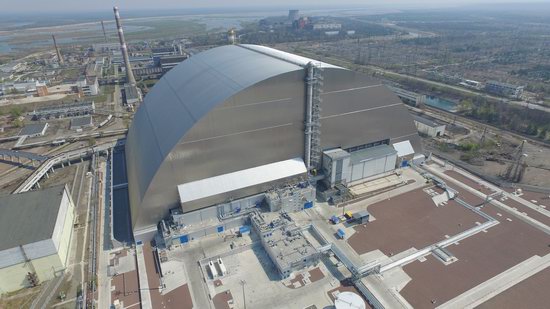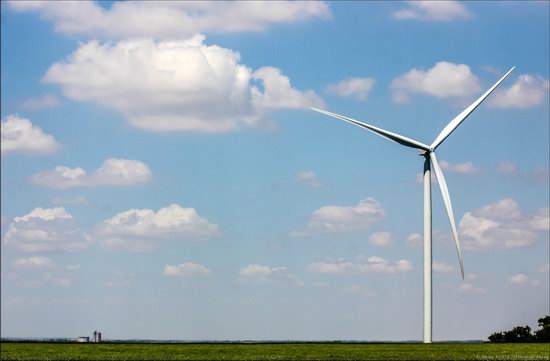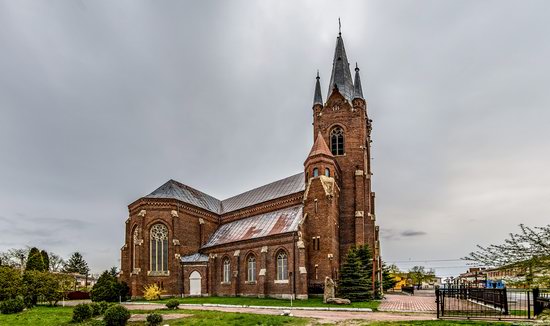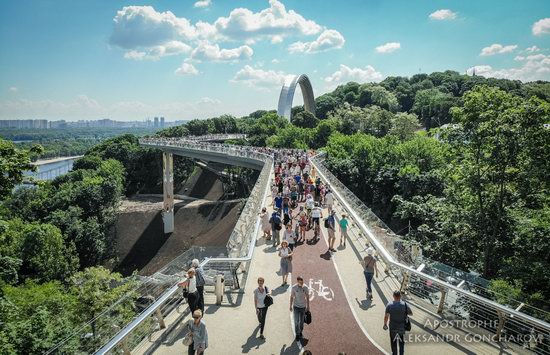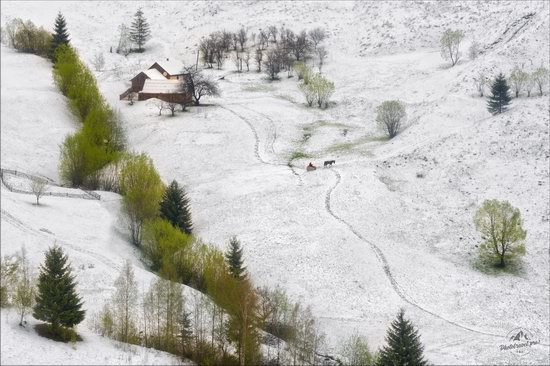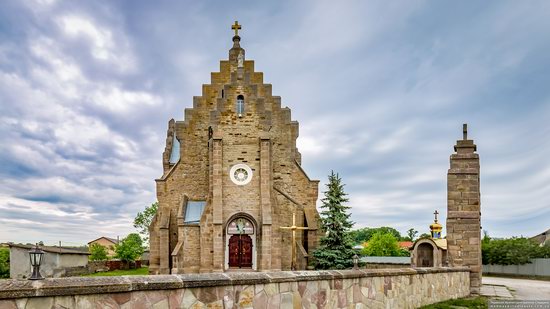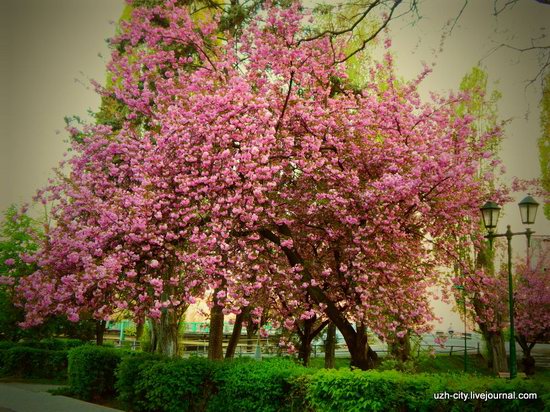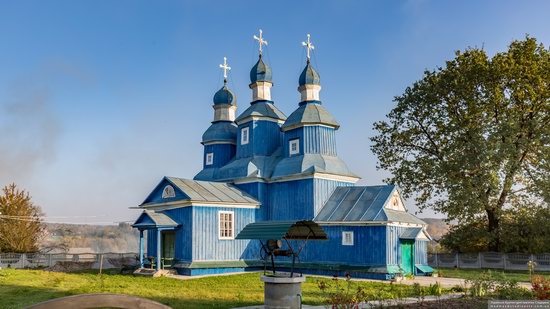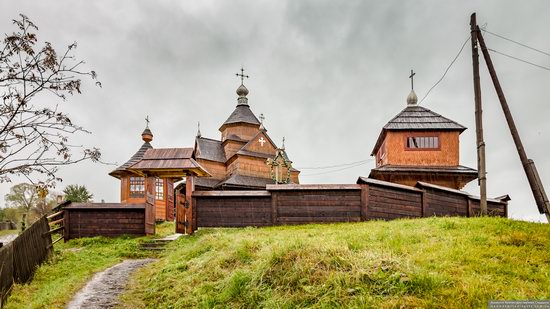11
New Sarcophagus for the Chernobyl Nuclear Power Plant
No comments · Posted by Sergei Rzhevsky in Ecology, Technology, Travel
July 10, 2019, 22 years after the organization of the Chernobyl Shelter Fund, the New Safe Confinement (the NSC) was finally put into operation in Pripyat.
The main arch-shaped structure has the following parameters: height – 109 m, length – more than 160 m, span-width – 257 m, weight – more than 31 thousand tons. This is the largest movable land structure in history. Photos by: Anton Usov.
Tags: Kiev oblast · Pripyat city
Svirzh Castle, located in the village of Svirzh in Lviv Oblast, about 44 km south-east of Lviv, is a unique monument of defense architecture of the 15th-17th centuries.
Built as a fortress, after the reconstruction of the 17th century, it lost its original appearance and turned into a picturesque fortified aristocratic residence. Svirzh Castle on Google Maps.
Tags: fortress · Lviv oblast
25
Picturesque Wind Farm in Prymorsk in Southern Ukraine
No comments · Posted by Sergei Rzhevsky in Ecology, Regions, Technology
Prymorsk is a town with a population of about 12 thousand people located in the south of Zaporizhia Oblast, about 42 km west of Berdyansk. This year, a new landmark appeared in the vicinity of the town – huge wind turbines that are visible for dozens of kilometers and even from Berdyansk.
By 2020, it is planned to launch two wind farms – Prymorsk Wind Farm #1 and Prymorsk Wind Farm #2 with a total installed capacity of about 200 megawatts (in total, 52 wind turbines, the blade length – 25 meters). They look especially picturesque when all fields are yellow from harvest. Prymorsk on Google Maps. Photos by: Alexey Novik.
development of renewable energy in Ukraine
Tags: Berdyansk city · Zaporozhye oblast
18
Neo-Gothic Catholic Church in Kamianka-Buzka
No comments · Posted by Sergei Rzhevsky in Architecture, Regions, Travel
Kamianka-Buzka is a small town with a population of about 11 thousand people located in Lviv Oblast, about 41 km north-east of Lviv.
The main architectural dominant of the town is the majestic neo-Gothic Catholic Church of the Assumption of the Blessed Virgin Mary built in the early 20th century, an architectural monument of local importance. Few provincial towns of Ukraine have such a spectacular building. Kamianka-Buzka on Google Maps. Photos by: Maxim Ritus.
Tags: church · Lviv oblast
27
New Pedestrian and Bicycle Bridge in Kyiv
No comments · Posted by Sergei Rzhevsky in Cities, Entertainment, Travel
May 25, 2019, in Kyiv, a new pedestrian-bicycle bridge connecting the People’s Friendship Arch and Saint Volodymyr Hill was officially opened.
The bridge offers impressive views of the center of the Ukrainian capital and the Dnieper River. The length of this bridge made of concrete, iron and glass is 212 meters, the width ranges from 6 meters in regular zones to 14 meters in observation zones. Photos by Aleksandr Goncharov for Apostrophe.
Tags: Kiev city
22
Unpredictable spring weather of the Carpathians
No comments · Posted by Sergei Rzhevsky in Nature, Photos
In early May, the weather in the Ukrainian Carpathians can be very changeable. It would seem that winter has long ended, snow has completely melted, green grass and flowering trees are everywhere.
And one night it suddenly snows and winter comes back, even if only for one day. Thanks to this relatively unusual natural phenomenon, you can see very picturesque views of the Carpathians, when snow clearly shows the smallest folds of the relief. Photos by: Vlad Sokolovsky.
Tags: Zakarpattia oblast
12
Church of the Holy Apostles Peter and Paul in Butsniv
No comments · Posted by Sergei Rzhevsky in Architecture, Photos, Regions
Butsniv is a village with a population of about 1,200 people located about 12 km south of Ternopil. One of the landmarks of the village is the Church of Saints Peter and Paul – an architectural monument of local significance.
It was built as a Catholic church according to the project of the Lviv architect Julian Zakharevich in 1890-1891. During the First World War, the church was partially destroyed. In 1922-1923, the building was restored. Butsniv on Google Maps. Photos by: Maxim Ritus.
Tags: church · Ternopil oblast
5
Blooming Spring in Uzhhorod
No comments · Posted by Sergei Rzhevsky in Cities, Photos, Travel
Uzhhorod is a city with a population of about 113 thousand people standing on the banks of the Uzh River at the foot of the Carpathian Mountains. Located about 813 km south-west of Kyiv, on the border with Slovakia, it is the administrative center of the Zakarpattia region.
The smallest regional center of Ukraine, Uzhhorod has a rich and long history, significant architectural heritage. The city looks especially colorful in late April – early May, when sakura, magnolia, tulips, and lilac are flowering. Photos by: uzh_city.
Tags: Uzhgorod city · Zakarpattia oblast
2
Church of St. Nicholas in Borysivka
No comments · Posted by Sergei Rzhevsky in Architecture, Photos, Regions
Borysivka is a village with a population of about 500 people located in the Vinnytsia region, about 65 km south-east of Vinnytsia. The main attraction of the village is the Church of St. Nicholas (1751) – the oldest monument of wooden architecture in the Vinnytsia region.
In Soviet times, the church was used as a granary. Despite this, the local community preserved not only old icons, but also a five-tier handmade iconostasis. Borysivka on Google Maps. Photos by: Maxim Ritus.
Tags: church · Vinnitsa oblast
21
Church of the Nativity of the Blessed Virgin in Vorokhta
No comments · Posted by Sergei Rzhevsky in Architecture, Regions, Travel
Vorokhta is an urban-type settlement and resort with a population of about 4,200 people located at an altitude of 850 meters above sea level in the Ivano-Frankivsk region, about 89 km south of Ivano-Frankivsk. Almost from all sides Vorokhta is surrounded by mountains and forests. This is a training center for Ukrainian athletes in ski jumping, biathlon, ski racing.
The main architectural landmark of Vorokhta is the wooden church of the Nativity of the Blessed Virgin – one of the best examples of Hutsul folk architecture built according to traditional technologies without a single nail in neighboring Yablunytsya in 1654-1657. Vorokhta on Google Maps. Photos by: Maxim Ritus.
Tags: church · Ivano-Frankivsk oblast

